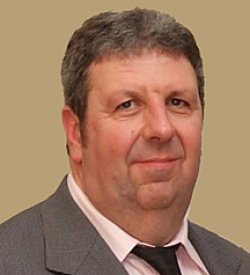Skinny, Vodafone and Flip all chase broadband customers looking for low prices. How do the uncapped fixed wireless broadband plans compare with the lowest cost fibre option?
Skinny now sells an uncapped fixed wireless broadband plan for $60 a month. It’s $10 cheaper if you are a Skinny mobile customer.
Vodafone has a similar product selling for $65 a month. Again, it’s $10 a month cheaper if you have a mobile plan.
These two new uncapped deals give the broadband market a new burst of competition.
At first sight they are roughly in-line with the least expensive fibre broadband plan. That would be Vocus’ Flip brand.
Flip will sell you
an unlimited fibre connection for $14 a week. That works
out at $728 a year. Skinny’s fixed wireless costs $720 a
year.
Similarities
The two have more in common than price. Flip customers living in Chorus fibre areas get a connection running at 50 Mbps down and 10 Mbps up. In other parts of the country the down speed is 30 Mbps.
On a good day Skinny and Vodafone fixed wireless customers will see similar speeds.
In both cases the speed is more than enough to
stream Neon or Netflix. There’s headroom for Zoom video
conferences while others are online. Children should be able
to do homework while parents work from
home.
Differences
You’ll notice the last but one paragraph starts with “On a good day…”. That’s because fixed wireless broadband speeds can change over time. Everyone in an area shares the same wireless spectrum. If a lot of users connect at once, the performance drops.
The most recent Measuring Broadband Report notes the average speed of fixed wireless through the day is 25 Mbps, but the average goes down to 21 Mbps at peak times.
Average is an important word here. There
will be people who get above average speeds while others
will get below average speeds.
21 Mbps is enough
Even the lower 21 Mbps speed is good enough for streaming video. Yet you may run into problems, fixed wireless broadband is less reliable than fibre. The Measuring Broadband report found no regular outages on fibre. Fixed wireless did not do as well.
While this might spoil your viewing or online gaming, it’s not a big deal. Surveys show urban fixed wireless customers are almost as satisfied with their service as fibre customers.
Latency
can be more of a concern. This is the time it takes for a
signal to travel to its destination and back. Fibre is low
latency. Fixed wireless is, in comparison, high latency. It
means online games react slower to your actions. If you work
from home it means more lag in video conference calls. Mind
you, in video calls this lag is rarely a deal
breaker.
The uncapped fixed wireless broadband small print
There is one huge difference between fixed wireless broadband and a low-cost fibre account from a provider like Flip.
When Flip says unlimited plans, there are no ifs, no buts, no qualifications. That’s not the case with fixed wireless.
Both fixed wireless service providers talk about fair use. Vodafone calls its plan Unlimited but that’s not the right word. It’s hard to find the fair use policy on the Vodafone site. This link will help.
The important part says:
“If your usage of our services materially exceeds the range of estimated use patterns, we will consider your usage to be excessive and/or unreasonable. We may contact you to advise you that your usage is in breach of our Fair Use Policy, and request that you stop or alter your usage to come within our Fair Use Policy.”
You couldn’t describe that as clear. Skinny uses different words but it amounts to the same thing. Both tell you unlimited does not mean there are no limits.
Location, location, location
You can buy Flip’s unlimited fibre plan anywhere on the nationwide fibre network. At the moment that’s over 82 percent of the country. In a couple of years it will be close to 90 percent of New Zealand.
Although the mobile data network has a broad reach, unlimited fixed wireless broadband plans is urban areas only. And there’s a limit on how many connections there can be in any given area. Fixed wireless service providers manage performance by limiting the number of connections.
In other words, you may not be able to get fixed wireless at your address.
Flip unlimited fibre costs about the same as today’s uncapped fixed wireless broadband plans. It’s usually faster and always more reliable. No-one is watching to see how much data you use.
The fixed wireless service providers have closed the price-performance gap with fibre ISPs. Wireless may suit your needs better than fibre, but for most people, Flip is a better deal.
Flip fibre versus uncapped fixed wireless
broadband was first posted at
billbennett.co.nz.




 Binoy Kampmark: The Australian Defence Formula, Spend! Spend! Spend!
Binoy Kampmark: The Australian Defence Formula, Spend! Spend! Spend! Ian Powell: New Hospital Building Trumps ‘Yes Minister’ Hospital Without Patients
Ian Powell: New Hospital Building Trumps ‘Yes Minister’ Hospital Without Patients Mike Treen: Prices Are Still Rising - It's A Cost Of Living Crisis
Mike Treen: Prices Are Still Rising - It's A Cost Of Living Crisis Gordon Campbell: On When Racism Comes Disguised As Anti-racism
Gordon Campbell: On When Racism Comes Disguised As Anti-racism Peter Dunne: Newshub And TVNZ Tip Of Media Iceberg
Peter Dunne: Newshub And TVNZ Tip Of Media Iceberg Harry Finch: Austerity – For And Against
Harry Finch: Austerity – For And Against